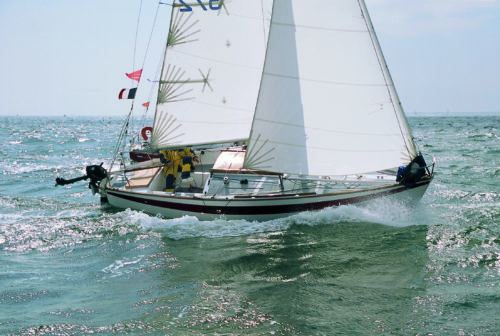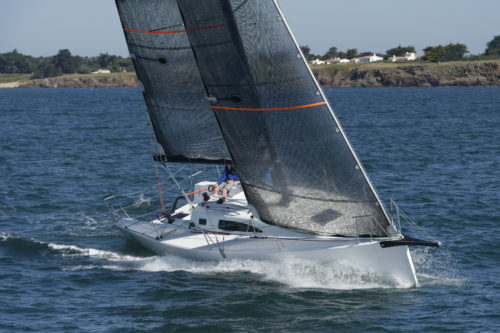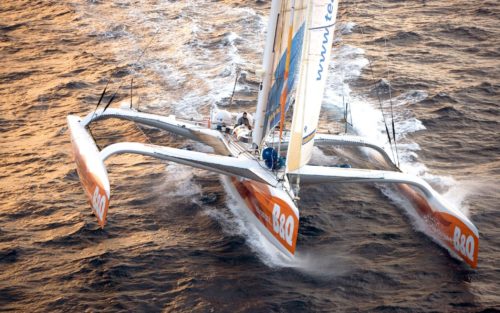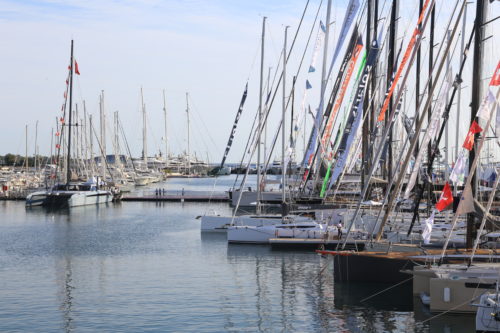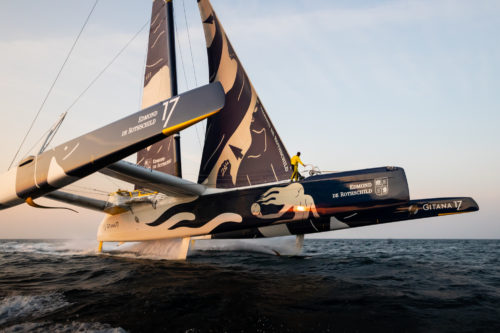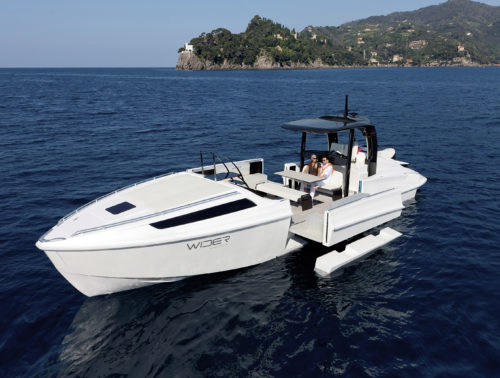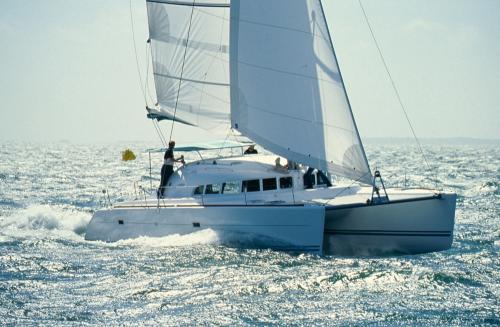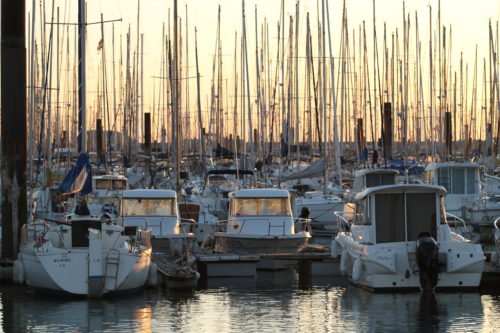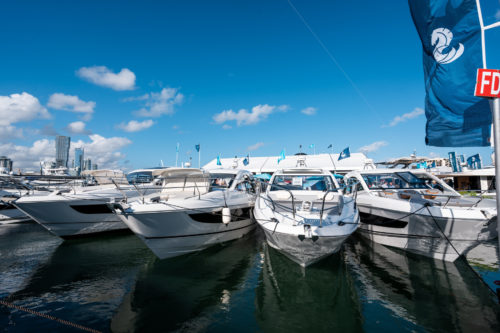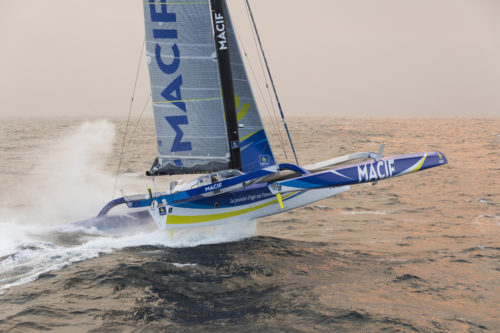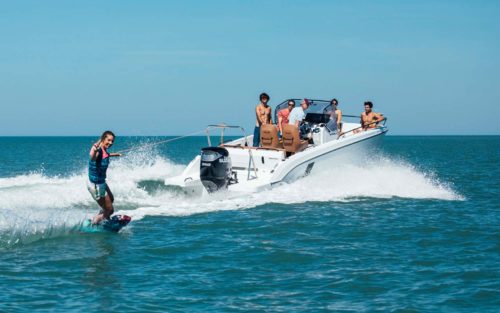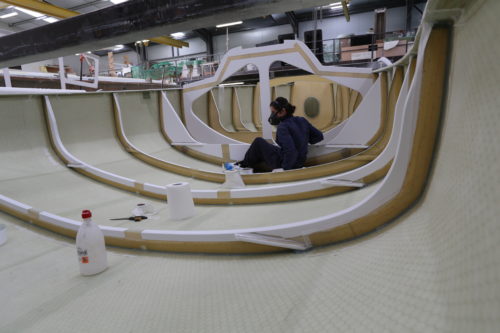Stronger in the storm
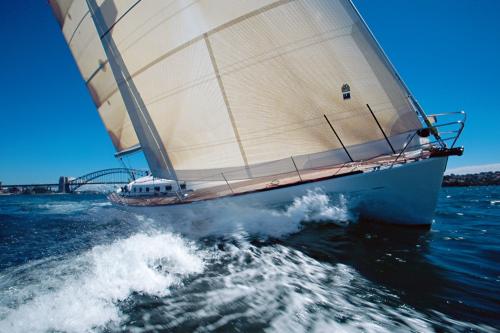
Ranked number one worldwide for sailing boat construction, number one for inflatables and watersports, and number four for motorboat production: this record speaks for itself, highlighting the French boat industry’s success during the first decade of the 21st century. This success is even more remarkable when we consider that the years from 2000 to 2010 were anything but plain sailing.
Hardly had the economy recovered from the bursting of the dot-com bubble, when the startup boom suddenly came crashing down, than it was hit by the shock of September 11, 2001. Two airliners struck the World Trade Center towers in New York, a third hit the Pentagon in Washington, and a fourth crashed in Pennsylvania. 15 months later, the US-led international coalition invaded Iraq. The second Gulf War disrupted the global geopolitical landscape and shook the foundations of the economy.
French growth was close to 4% in 2000. It reached just 0.8% in 2003. It slowly climbed back up to 2.8% in 2004. But then came another shock. In 2008, when the shock wave from Wall Street’s collapse, in the wake of the “Subprime Crisis”, struck France, French growth fell back to 0.3%. In 2009, it dropped into negative territory (-2.9%). The only positive data concerned inflation, which was down to less than 2% in 2000, before spiking briefly to 3.2% in 2008 and then moving close to zero in 2009, and later rising again to 1.7% in 2010. Unemployment, which had finally fallen below 9% of the active population in 2000, climbed back to 9.8% in 2005. Except in 2008, when it dipped to 7.4% just before the international financial crisis, the unemployment rate was close to 10% through to 2010. Public spending, which had stayed under 55% of GDP from 2000 to 2008, rose to 58% in 2010, with annual growth of 2% to 3%. The public deficit climbed above 7% by the end of the decade.
In this seriously turbulent macroeconomic climate, the French boat sector managed to weather all the storms. Even better, it consolidated its position as the global market leader for recreational sailing boats. French yards saw their revenues increase by 92% in 10 years, from 1990 to 2000. Over the next decade, they grew by another 25%, to 4.34 billion euros. In these turbulent waters, French players are the clear race leaders.
Thanks to the growth in their domestic market, the healthy competition between the major groups, the know-how of French naval architects, engineers and technicians, French-built sailing models win over the world. In 2000, the American magazine Cruising World names the Super Maramu, from the Amel yard in La Rochelle, “Best Boat of the Year”. A robust 16m polyester ketch, with everything thought out and designed to allow a retired couple to sail around the world with complete autonomy and exceptional levels of comfort. Truly iconic.
The growing popularity of catamaran cruisers will reinforce the global enthusiasm for French-made boats.
In 2005, the United Kingdom alone welcomes 20% of France’s total production of live-aboard sailboats, closely followed by Spain. In 10 years, from 1995 to 2005, export sales volumes increase tenfold! During the decade from 2000 to 2010, exports account for more than 60% of the sector’s revenues each year, peaking at 66% in 2010. Very few French industrial sectors can make the same claim.
An air pocket takes the wind out of export sails in 2005, with sales to European Union countries dropping 6.2%. But this is more than offset by the robust development of sales outside of Europe, with 30% growth. The United States alone accounts for half of these transactions.
Paradoxically, the official introduction of the euro muddies the waters. While it greatly simplifies trade within the European Union, it makes life more complicated for exporters outside the EU. In 1999, when it is launched, the euro is worth 1.16 dollars, but by 2000 it is down to just 0.80 dollars. From there, the single currency embarks on a relentless climb. In 2002, when it is effectively introduced, the euro briefly reaches parity, before steadily rising to reach 1.60 dollars in July 2008!
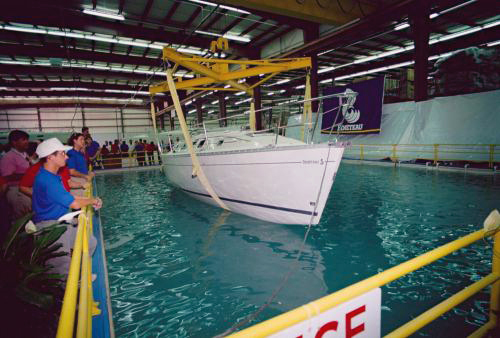

For French boat companies, this effectively closes the door to the United States, a previously crucial market: who can absorb a 60% increase in their prices in dollars?
However, the world’s leading sailboat builder, the Bénéteau-Jeanneau Group, has an ace up its sleeve. Back in 1984, Bénéteau had opened a plant in the United States, and specifically in Marion, South Carolina. This facility produces the Group’s monohulls for the North American market. Between 2000 and 2010, it accounts for up to 70% of Bénéteau–Jeanneau sales on this market. So much so that many boaters on the other side of the Atlantic believe that Bénéteau is an American brand…
In 2010, French yards produce nearly 55,000 boats, with revenues of over 900 million euros. Live-aboard sailboats make up more than 50% of these sales. With a fleet like this, both in France and internationally, and the economic uncertainty and purchasing power fluctuations, it is no surprise to see a dynamic pre-owned market take shape. In France, across the EU, and outside of Europe.
In France, pre-owned boat shows, such as Les Mille Sabords in Le Crouesty and the La Napoule show, which also features new boats, become increasingly popular during the first decade of the 21st century. The boating population is getting older, and the first baby boomers are retiring, moving from purchases guided by their passion to more practical and rational choices. The rapid development of the internet enables the emergence of specialist websites that can be accessed around the world, significantly strengthening the visibility of international brokers. Magazines can post their classified ads online. In 2010, Argus du Bateau offers 18,000 listings online for free…
The world champion for new boats, France also emerges as a global hub for the used boat trade. Well positioned to sail confidently into the second decade of the 21st century.
















